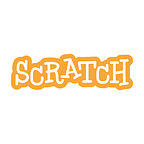Helping Young Children Experiment, Explore, and Express Themselves with Code
Below is an excerpt from The Official ScratchJr Book: Help Your Kids Learn to Code, an easy-to-use, hands-on guide for parents and educators.
Written by the creators of ScratchJr, Marina Umaschi Bers (Professor at the Eliot-Pearson Department of Child Study and Human Development at Tufts University) and Mitchel Resnick (Professor of Learning Research at the MIT Media Lab), The Official ScratchJr Book is the perfect companion to the ScratchJr app. With ScratchJr, young children can bring their stories and ideas to life by connecting blocks of code to make characters move, jump, dance, and sing. Each chapter includes several activities that build on one another, culminating in a fun final project.
Newly released by No Starch Press, the book is available in paperback or ebook format.
(Images provided courtesy of No Starch Press)
This book’s history stretches back 50 years when, in the 1960s, Seymour Papert presented a bold new vision of how computers might enter the lives of children. At the time, computers still cost tens of thousands of dollars, if not more. The first personal computers would not become commercially available for another decade. But Seymour foresaw that computers would eventually become accessible for everyone, even children, and he lay the intellectual foundation for how computing could transform the ways children learn and play.
While other researchers imagined that computers might someday be used to deliver information to children or pose questions to children, Seymour had a very different vision. He believed that children should be in control of computers, using them to experiment, explore, and express themselves. Seymour and his colleagues at MIT developed the programming language Logo specifically for children so that children could program their own pictures, stories, and games.
In his 1980 book Mindstorms: Children, Computers, and Powerful Ideas, Seymour argued that children should program computers, not the other way around.
The two of us writing this book (Marina and Mitch) worked closely with Seymour when we were graduate students at MIT, and we were deeply influenced by his ideas. Both of us have dedicated our careers to extending Seymour’s work, providing young people with opportunities for designing, creating, and inventing with new technologies.
Mitch’s Lifelong Kindergarten research group at the MIT Media Lab collaborated closely with the LEGO Group on the MINDSTORMS and WeDo robotics kits and cofounded the Computer Clubhouse Network of after-school learning centers for youth from low-income communities. More recently, the group developed the Scratch programming language and online community, which is used by millions of young people (ages 8 and up) around the world.
Marina’s Developmental Technologies (DevTech) Research Group at the Eliot-Pearson Department of Child Study and Human Development at Tufts University has focused on early childhood learning, developing technologies and activities for preschool, kindergarten, and early elementary students. The group developed the ideas and prototypes that led to the KIBO robot kit, which enables young children (ages 4–7) to program robotic projects by putting together sequences of wooden blocks. With KIBO, children learn programming without screens or keyboards. In 2013 Marina co-founded KinderLab Robotics to make KIBO widely available. The ideas underlying Marina’s and the DevTech Research Group’s work are described in Marina’s books Blocks to Robots: Learning with Technology in the Early Childhood Classroom (Teachers College Press, 2007) and Designing Digital Experiences for Positive Youth Development: From Playpen to Playground (Oxford University Press, 2012).
In 2010, Marina suggested that our two groups work together to develop a programming language for young children, extending MIT’s work on Scratch and drawing on Tufts’ experience with early childhood learning, and thus the idea for ScratchJr was born. We teamed up with Paula Bontá and Brian Silverman of the Playful Invention Company (PICO), who brought strong expertise in the design and development of programming languages for children (and who also had worked closely with Seymour Papert). ScratchJr has been a true team effort, with contributions by many people at Tufts, MIT, PICO, and elsewhere. We encourage you to look at the ScratchJr website for a full list of contributors.
We’ve been thrilled by the response to ScratchJr from thousands of children, parents, and teachers around the world, but we recognize that more and better support materials are needed to help people use ScratchJr to its full potential. We wrote this book to support the use of ScratchJr in both homes and schools. We hope that you find the book useful, and we look forward to hearing your feedback and suggestions.
Enjoy!
About the Authors
Marina Umaschi Bers is a professor in the Eliot-Pearson Department of Child Study and Human Development and adjunct professor in the Computer Science Department at Tufts University. She heads the Developmental Technologies Research group where she studies innovative ways to promote positive childhood development through new learning technologies. She is also the creator of KIBO, a robotics platform for children 4 to 7, which allows young builders to learn programming and engineering skills without screens.
Mitchel Resnick is the creator of Scratch, the wildly popular programming language used in thousands of schools and homes worldwide, with over 8 million users. He directs the Lifelong Kindergarten group at the MIT Media Lab and was awarded the McGraw Prize in Education in 2011 for his creative learning technologies.
